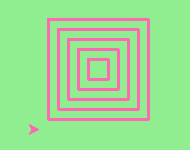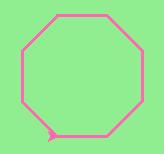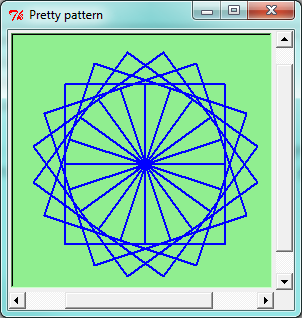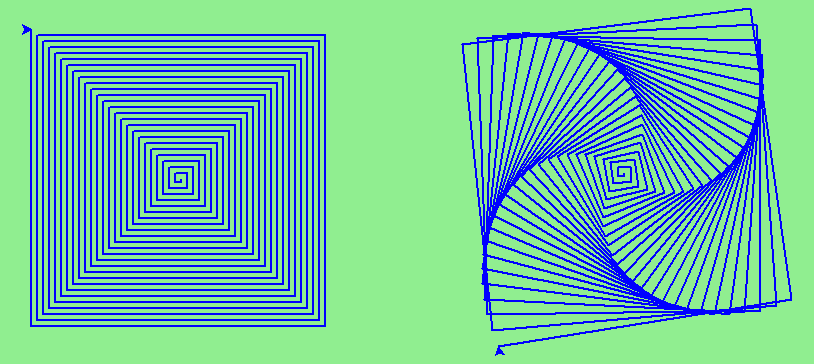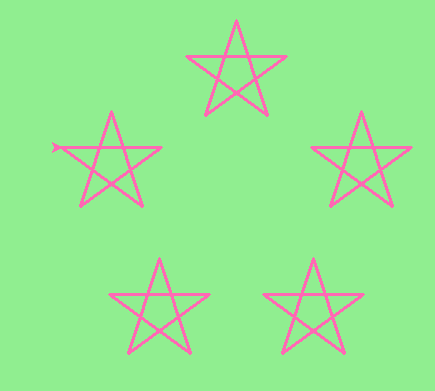1.
Use the drawsquare function we wrote in this chapter in a program to draw the image shown below. Assume each side is 20 units. (Hint: notice that the turtle has already moved away from the ending point of the last square when the program ends.)

Solution.
import turtle
def drawSquare(t, sz):
"""Make turtle t draw a square of with side sz."""
for i in range(4):
t.forward(sz)
t.left(90)
wn = turtle.Screen() # Set up the window and its attributes
wn.bgcolor("lightgreen")
alex = turtle.Turtle() # create alex
alex.color('hotpink')
alex.pensize(3)
for i in range(5):
drawSquare(alex, 20) # Call the function to draw the square
alex.penup()
alex.forward(40) # move alex to the starting position for the next square
alex.pendown()
wn.exitonclick()
